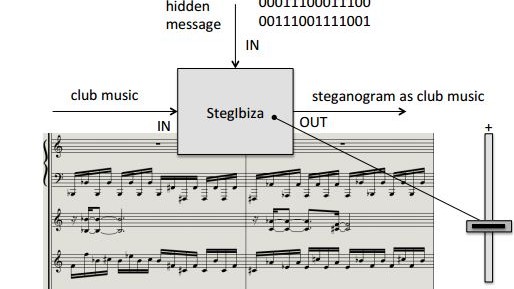Party Algorithm Hides Messages in Ibiza Trance Music
The idea of using music to send messages has a long history. The German Benedictine monk Johannes Trithemius is widely credited with founding the discipline in the 16th century. And various others have run with the idea, with techniques such as mapping notes to letters (developed by the 17th-century German priest Gaspar Schott). More recently, cryptographers have developed a wide range of electronic techniques for hiding messages in digital music.
So it’s easy to imagine that the options for developing new forms of musical steganography have been exhausted.
Not so. Today, Krzysztof Szczypiorski at the Warsaw University of Technology in Poland reveals an entirely new form of musical steganography that he developed specifically for Ibiza dance-club music. The new method exploits the trance-like rhythms that this kind of music is famous for.

Ibiza is one of several Balearic islands that sit some 100 miles off the coast of Spain in the Mediterranean Sea. It is famous partly for its beautiful towns and villages but mainly for its nightlife and the electronic music that has evolved in clubs and beach raves. The music is characterized by a strong trance-like beat that encourages dancing—a beat that moves the feet!
Szczypiorski’s technique is to vary the tempo of the beat in a way that encodes information. But any changes have to be too subtle for human listeners to notice.
This kind of modification is possible because of modern digital audio workstations that allow various elements of compositions to be manipulated. For example, DJs often alter the tempo of music to mix it together, a particular feature of the Ibiza music scene.
Szczypiorski began by developing a simple Morse-like code in which he could spell out a series of dots and dashes to send messages. To indicate a dash, he speeds up the tempo for a single beat; to indicate a dot, he slows it down.
He used Apple’s Logic X Pro digital audio workstation to create covers of several popular songs without lyrics. These included “Miracle” by Queen at 92 beats per minute, “So What” by Miles Davies at 120 beats per minute, and “Rhythm Is a Dancer” by Snap at 130 beats per minute. “All original covers were prepared without any vocal parts and arranged in techno, hip-hop, or trance styles with the instruments available in Logic X Pro,” he says.
He then varied the tempo in a way that encoded the message “Steganography is a dancer!” In Morse code that looks like this:
... - . --. .- -. --- --. .-. .- .--. .... -.--
.. ... .- -.. .- -. -.-. . .-. -.-.—
The message appeared twice at random in each piece of music.
A key question is how much to change the tempo so that the message is hidden from human listeners. To find out, he asked 20 people to listen to the music at an open-air summer party. Ten of these people had backgrounds as musicians.
The results show that the method is clearly viable. When Szczypiorski changed the tempo by more than 3 percent, about half the listeners noticed the difference. But when the change was less than 2 percent, nobody noticed. “At this level the experiment was stopped, because the rest of the party did not care about the music,” he says.
He goes on to suggest that it would be a simple matter to develop software that automatically encoded or decoded messages sent this way. Szczypiorski calls it StegIbiza.
Of course, it’s unlikely that the world’s spies will converge on the dance clubs of Ibiza to send hidden messages to one another. A much more likely scenario is that musicians might use StegIbiza to send messages to fans in the know. Or the method could be used to embed meta-information about the music into a recording, which can then be read by music algorithms.
Either way, Szczypiorski has clearly had some fun coming up with and testing his idea. Trithemius would surely approve.
Ref: arxiv.org/abs/1608.02988 : StegIbiza: New Method for Information Hiding in Club Music
Keep Reading
Most Popular
Large language models can do jaw-dropping things. But nobody knows exactly why.
And that's a problem. Figuring it out is one of the biggest scientific puzzles of our time and a crucial step towards controlling more powerful future models.
How scientists traced a mysterious covid case back to six toilets
When wastewater surveillance turns into a hunt for a single infected individual, the ethics get tricky.
The problem with plug-in hybrids? Their drivers.
Plug-in hybrids are often sold as a transition to EVs, but new data from Europe shows we’re still underestimating the emissions they produce.
Stay connected
Get the latest updates from
MIT Technology Review
Discover special offers, top stories, upcoming events, and more.